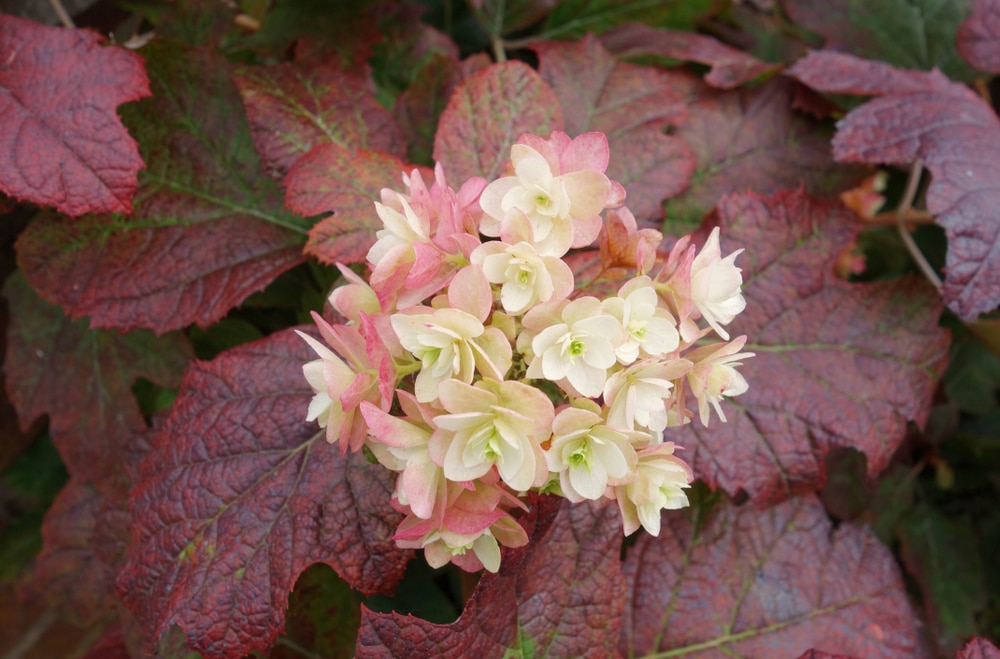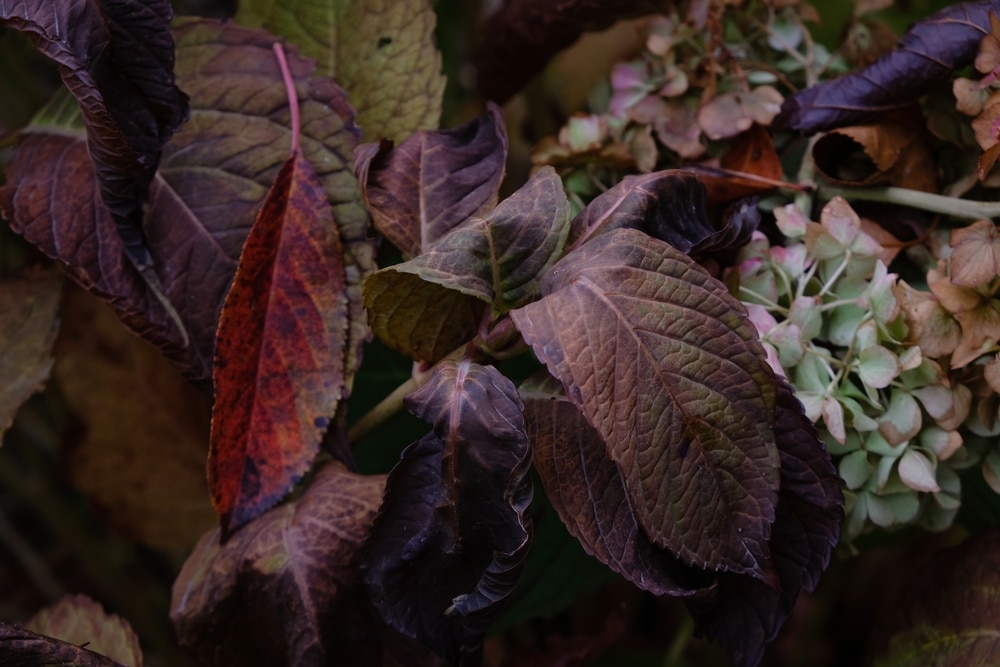Ever wondered why hydrangea leaves turn purple? There are a few reasons this may happen. This color change may come as a surprise as the plant, like many others, is known for its green brilliant colored leaves. Chlorophyll pigment gives the plant a green color which helps them create their food through photosynthesis.
When you notice any discoloration, it suggests that there is a problem. Sometimes this change in leaf color is brought about by a deficiency of nutrients or environmental issues. This guide explains the reason behind hydrangea leaves turning purple and how you can resolve the problem.
4 Reasons for Hydrangea Leaves Turning Purple
There are many reasons why hydrangea leaves might turn purple. It could be due to too much sun exposure, a lack of nutrients, or even a fungal infection. Let’s talk about each one of these causes in detail.
Inadequate Nutrients
The lack of phosphorus in the hydrangea plant contributes to purple discoloration. This deficiency is common in older, mature, or lower leaves that may be slightly chlorotic, which causes a purple margin on the leaves.
The plant will have a stunted appearance due to shorter internodes and potentially decreased flower buds.
Fungal Diseases
Cercospora leaf spot can cause purple discoloration. It’s a fungal disease where the affected leaves show grey spots of around 2–3 mm. These disease spreads in conditions of high temperature and humidity.
Increased humidity and direct sunlight can intensify the condition of infection. The spots are first noticed on old leaves at the bottom of the plant and spread toward the top.
Frost Damage
If the temperature is too low, the water inside the plant freezes. As the ice expands, the plant’s cells become damaged which may lead to the death of parts of the plant. Recent growth is more susceptible to this kind of damage.
Low Soil pH
It’s not uncommon that most people don’t know the ideal soil conditions for their plants. The ideal soil PH for hydrangeas is between 5.0 and 6.5. If the soil is too alkaline, it can cause the hydrangea leaves turning purple issue. This is because the plant can’t absorb the nutrients it needs.
How to Protect Your Hydrangea Plant Leaves from Turning Purple
Depending on the cause, there are a few things you can do to protect your plant from leaves turning purple:
If it’s due to a lack of nutrients, amend the soil with some fertilizer designed explicitly for hydrangeas. A competent landscaper can help you test your soil to see what it’s lacking and recommend suitable fertilizers. For instance, if your soil is too alkaline, they might recommend using an acidic fertilizer.
If a fungal infection causes the problem, clean up any dead leaves or debris around the plant. This can help prevent the spread of the infection. You can also prune back any affected branches to promote new growth.
If the leaves are turning purple due to frost, the only thing you can do is wait. Next time, use mulch to protect the plant from frost.
Finally, if you are dealing with soil pH level problems even before considering cultivating this plant, soil testing should be carried out to ensure that the soil is of the preferable pH. Acidic soils are not recommendable.
It’s always recommendable to work with a professional when trying to fix problems with your plants. A good landscaper can diagnose the problem and recommend the best action.
Conclusion
Generally, hydrangea thrives in fertile and well-drained soils that receive plenty of moisture. They prefer partial sun. With careful observation of the leaves, a gardener can easily notice the problem of purple coloration. However, it’s natural hydrangea leaves turning purple in cold weather.
Make sure you control fungal diseases, check the soil pH, and apply suitable fertilizers to cub the problem of purple coloration.

